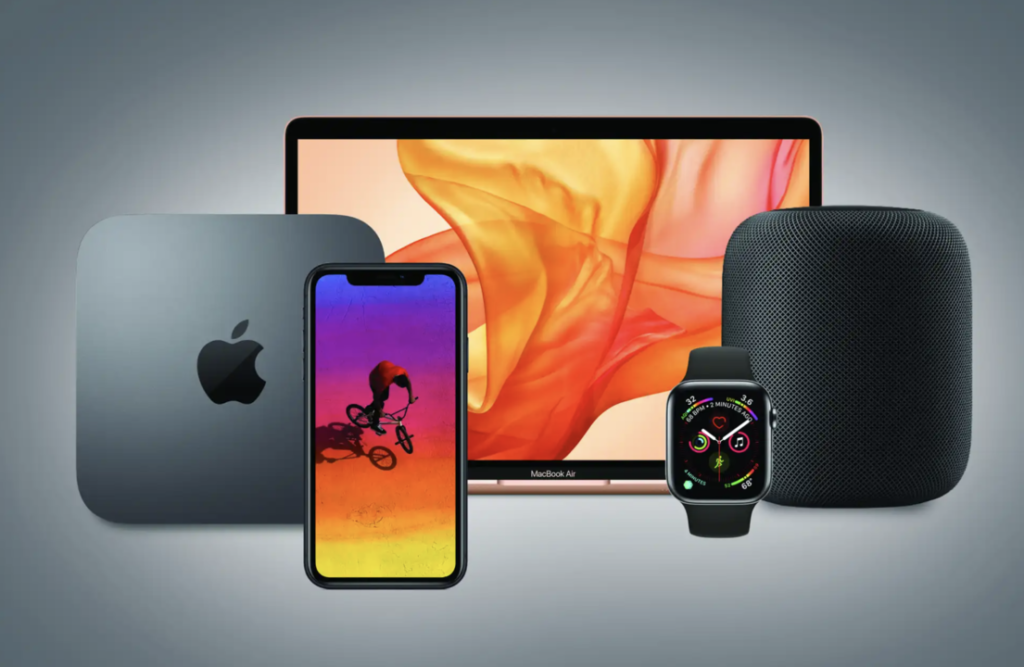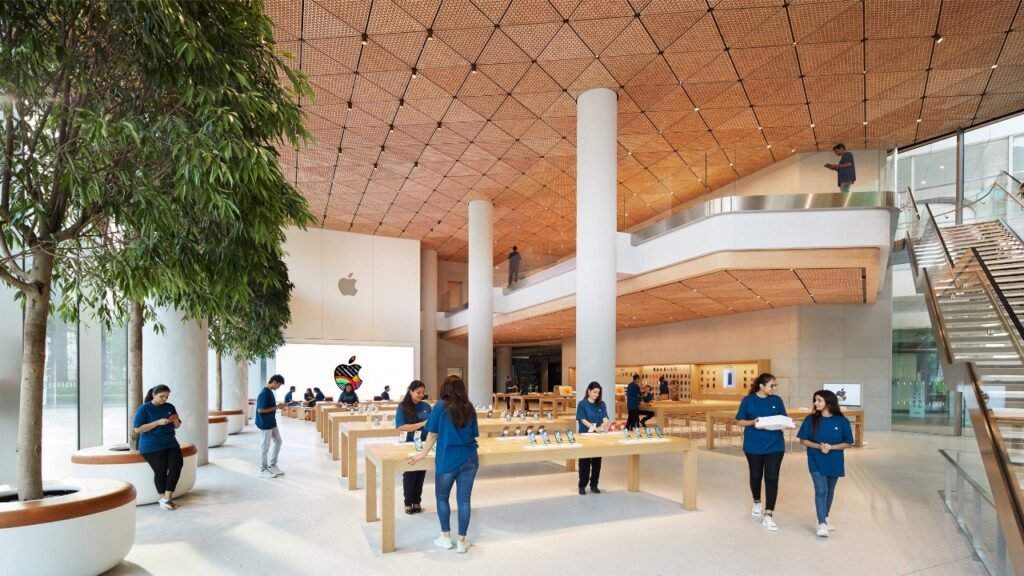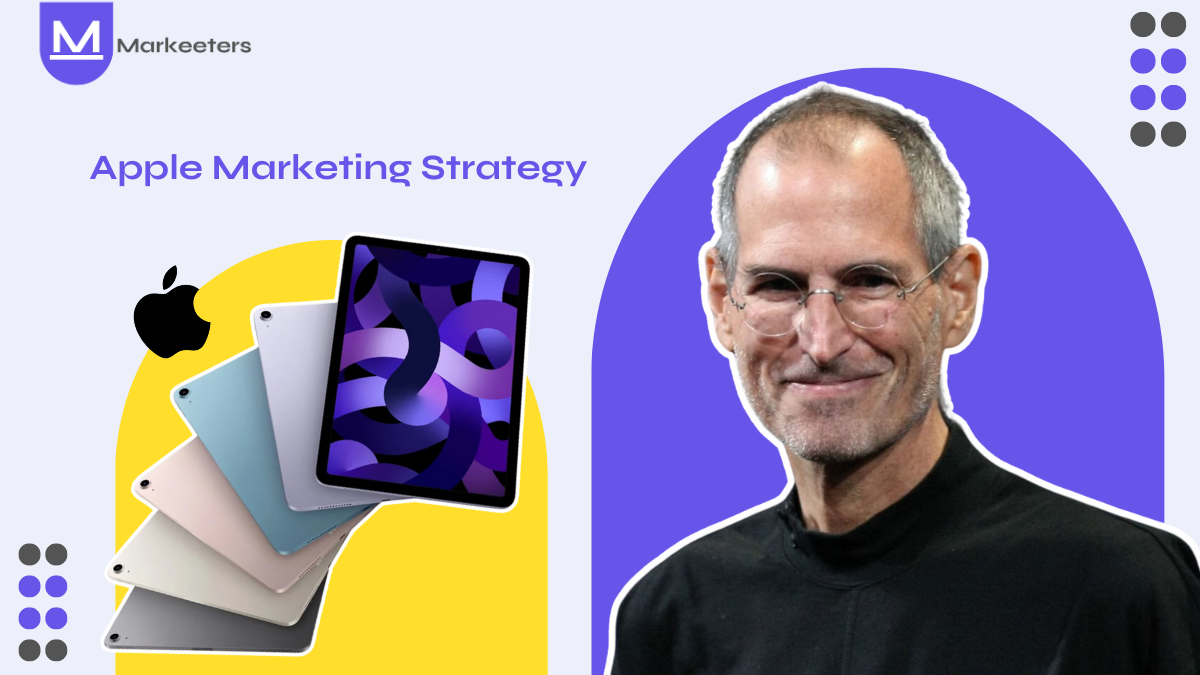Apple stands as an unparalleled example of innovative technology combined with masterful marketing. Beyond just creating products, Apple has crafted a brand culture that ignites anticipation, fuels desire and fosters unwavering loyalty. The company acknowledges the utmost importance of marketing in driving business success. Apple consistently refines its marketing strategies to navigate emerging market challenges and maintain its stronghold. This ensures continued penetration and relevance in the ever-evolving marketplace.
Apple’s marketing strategy serves as a model for aspiring companies who seek to attain comparable levels of global renown. Marketing is more than mere product advertising. It involves meticulous planning of distribution channels, which are tailored to specific niche markets, and strategic promotions. This comprehensive approach is precisely where Apple excels. It adeptly generates product awareness, implements effective marketing tactics, and cultivates demand across diverse market segments. Apple doesn’t simply promote products, it sells experiences.
Facts About Apple Company
| Founded | April 1, 1976 |
| Founders | Steve Jobs, Steve Wozniak, Ronald Wayne |
| CEO | Steve Jobs, Steve Wozniak, Ronald Wayne |
| Headquarters | California, United States |
| Products and Services | IPhones, iPads, Macs, Apple Watch, Apple TV, iCloud, Apple Music, App Store, and more. |
| Environmental Initiatives | Committed to achieving carbon neutrality by 2030 |
Are you Apple’s Target Market?
Apple has invested significant resources in comprehending its target demographic, including their preferences, behaviors, and communication styles. They streamline their marketing approach by employing language that resonates with their audience, fostering robust connections with potential and current customers alike.
Apple has targeted individuals who prioritize innovation, design, seamless user experiences, and premium quality in their technology purchases. This includes:
- Tech Enthusiasts aka early adopters and tech-savvy individuals who seek cutting-edge features and capabilities in their devices.
- Creative Professionals like artists, designers, and content creators who value the seamless integration of hardware and software for their creative workflows.
- Business Professionals such as executives, entrepreneurs, and professionals who rely on Apple products for productivity and security in their work environments.
- Affluent Consumers with disposable income who are drawn to Apple’s premium pricing and luxury branding.
Apple’s Winning Marketing Mix
Apple’s marketing mix cultivates enthusiastic followers who eagerly queue for hours, anticipating the latest product release, with updates swiftly disseminated across social platforms. The key elements are:
Product
Apple offers an extensive array of products, spanning from the MacBook, iPad, iPhone, Apple TV, iPod, and Apple Watch to digital content, software, accessories, and cloud services. This diversification proves the brand’s unwavering dedication to innovation and customer satisfaction. The emphasis on product design, functionality, and user experience helps distinguish Apple’s offerings in the market.

Pricing
Apple employs a premium pricing strategy to target the cream layer of the market. It involves setting prices higher than competitors. The high price is justified by Apple’s unique and innovative designs and customers are willing to invest in Apple’s premium quality despite the higher price point. Apple occasionally introduces lower-priced alternatives or older models to cater to a wider range of consumers, hence penetrating deep into the market.
Place
Apple adopts a multi-channel marketing mix strategy, leveraging both online and offline distribution channels. The company distributes its products through its dedicated Apple Store locations, official company websites, and online stores. The company’s retail stores serve as flagship locations that offer immersive brand experiences and expert customer service.
Promotion
Apple’s promotional strategies focus on creating buzz, anticipation, and brand loyalty. It employs a variety of promotional tactics to showcase its products. These encompass advertising, sales promotions, personal selling, and public relations. Strategic partnerships and sponsorships also help enhance Apple’s brand visibility.
Moreover, Apple has perfected the art of product launches. New product releases have a “wow” factor that boosts sales right away and generates a buzz that keeps people interested in the brand.
What sets Apple’s Marketing Strategy Apart from others?
Beyond just selling products, Apple has mastered the art of creating experiences, forging emotional connections, and shaping cultural narratives. Apple’s marketing strategies don’t just convey specifications and features but rather how the product can change your life and make it better. Let’s unveil the unique characteristics that define Apple’s marketing strategy.
Embracing Minimalism
Apple communicates sophistication and elegance with simplicity. The minimalist aesthetic resonates with consumers seeking clarity and authenticity, reinforcing Apple’s image as a premium brand.
Apple bases its product design on the idea that less is more. They don’t overwhelm their targeted customers with too many choices or options. Apple keeps its marketing and graphics straightforward and lets its products speak for themselves. They are aware that they don’t need to spend a lot of money on ads to sell their items. Additionally, the company uses straightforward language to minimize uncertainty and consistently emphasizes the benefits that customers require. This is an example of their genius in content marketing—they create sophisticated products without using sophisticated vocabulary.
Significant Product Positioning
Apple products appear prominently in popular films and TV shows, granting them exposure to millions of viewers worldwide and hence increasing their brand visibility. This is an integral part of Apple’s marketing strategy. Apple recently revealed that it relies heavily on product placement. By featuring its products in culturally significant movies and shows, Apple reinforces its brand’s relevance and resonance with contemporary lifestyles. This association with popular culture helps Apple maintain its status as a trendsetting brand that embodies innovation and style.
Building Hype and Mystery Around the Product
Usually, when a company launches a new product in the market, the marketing team reveals details and information about the new product. This is done to develop anticipation and excitement among buyers by providing them with all the information about a product. However, Apple doesn’t follow suit. It takes a new and unique approach, creating excitement by withholding information about new products as they tease it out.
It’s a smart strategy since it makes the target audience devoted followers by piquing their curiosity and motivating them to share what they learn about the product with others. One of Apple’s key tactics is its adept creation of anticipation and exclusivity around product launches. Through secretive announcements and carefully orchestrated events, Apple generates a frenzy of excitement among consumers. The limited availability of products at launch further fuels this sense of exclusivity, driving fans to queue for hours to be among the first to own the latest iPhone, iPad, or MacBook.
Customer-Centric Strategy
Apple holds the customer’s experience in high regard. The experience can include every element, including trying out new products in the retail store, buying the item, receiving it, unboxing it, and setting up the device. Apple relentlessly focuses on user experience. From intuitive interfaces to elegant product design, every aspect of Apple’s products is meticulously crafted with the customer in mind. The Apple retail stores are also carefully designed with warm lighting, monochromatic color schemes, and a layout that appeals to the shopper’s requirements.

Audience Rapport
When you visit Apple’s website, you see eye-catching product images and simple messages about why their products are great. Apple focuses on attractive product photos and clear writing that emphasizes the features of the device rather than overwhelming consumers with technical specifications. It’s not like Apple does not provide information on product specs and technical specifics. Those are mentioned on every product page on the Apple website.
However, it is below the fold. Customers won’t initially encounter terms like gigahertz or megabytes. Instead, they’ll find words like “edge-to-edge glass” “retina display” and “LED backlighting” that they understand. Apple has built consumer loyalty through its market share and deep understanding of its clientele. Additionally, they communicate with them in a way that helps them feel at ease rather than overwhelmed and perplexed.
Emotional Branding
Emotional branding is not just a marketing tactic for Apple, it’s a fundamental aspect of its brand identity and a key driver of its continued success in the marketplace. Compelling storytelling, captivating advertising campaigns, and iconic product launches are great ways to create that emotional impact. Apple excels at leveraging emotional branding to forge deep connections with consumers which helps in:
Driving brand loyalty
When consumers have positive emotional experiences with a brand, they are more likely to become loyal customers who consistently choose that brand over others. Emotional branding fosters loyalty by creating a strong bond between the brand and its customers, leading to repeat purchases and long-term relationships.
Encouraging Advocacy and Word-of-Mouth
Consumers who have strong emotional connections with a brand are more inclined to become brand advocates who enthusiastically recommend the brand to others. Emotional branding cultivates brand advocates who share their positive experiences with friends, family, and social networks, leading to organic word-of-mouth marketing and brand growth.
Resilience Against Price Sensitivity
Brands that have successfully established emotional connections with consumers are less susceptible to price sensitivity. When consumers feel emotionally attached to a brand, they are often willing to pay a premium price for its products or services, regardless of lower-priced alternatives available in the market.
Conclusion
In conclusion, simplicity and finesse in design are paramount, as they allow products to speak for themselves. Tapping into target markets and audiences is the key to a successful marketing strategy. Apple’s marketing strategy epitomizes simplicity and emotional connection. By understanding its audience, delivering impactful design, and evoking emotion, Apple creates unparalleled brand loyalty. With a focus on authenticity and quality, they transcend price competition, solidifying their position as a global industry leader. Apple’s approach serves as a timeless model of effective marketing, setting the standard for brands worldwide.
FAQ’s
How does Apple generate so much hype and anticipation around new product launches?
The company maintains secrecy around upcoming products, leaking just enough information to pique curiosity while keeping most details under wraps. This creates a sense of mystery and speculation among consumers and tech enthusiasts alike. Apple also uses influencers, celebrity endorsements, and strategic partnerships to amplify buzz and ensure its products are seen as must-have items.
How does Apple create a sense of exclusivity around its products?
It maintains tight control over supply, resulting in limited availability at launch, which fuels consumer demand. Also, Apple’s products are positioned as premium, with higher price points than competitors, which contributes to the perception of exclusivity.
How does Apple maintain such strong brand loyalty among its customers?
Apple has cultivated a loyal customer base through a combination of factors. Firstly, the company emphasizes on user experience across its ecosystem of products which creates a sense of convenience and familiarity and hence discourages customers from switching to other brands. Secondly, Apple fosters a sense of community and belonging among its users. Finally, the company’s commitment to innovation and continual product improvements ensure that customers remain excited and invested in the brand’s future offerings.



